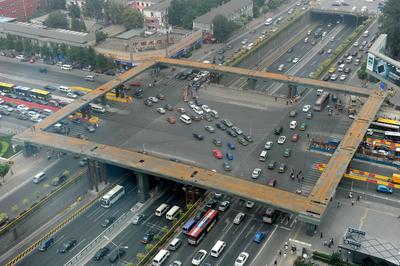China’s integration into the global economy has brought one-fifth of the global population into the world trading system, which has increased global market potential and integration to unprecedented levels.
The global and national benefits of China’s economic rise are evident but there are also costs. China’s integration into the global economy has forced a worldwide reallocation of economic activities, resulting in frictions in China’s trading, political relations, and several globally significant externalities.
China’s rising economic weight in the global economy is not only affecting its economic and political relations with the rest of the world, but is also changing the global and regional economic and political landscapes in fundamental ways. China faces the critical task of managing its rise in a way that is palatable to both the domestic and the world communities. For the world community, accommodating a rising China is likely to be the most important task of the first half of the twenty-first century.
The strategic policy objective of ‘rebalancing’ in China is a domestic policy framework by China’s leadership to a series of major structural challenges to China’s present industralisation path. These structural challenges include: its large current account surpluses, the composition of growth which is heavily concentrated in (heavy) industrial-led investment (measured by its share of GDP), at the relative expense of household consumption (especially of wages and rural incomes) and government services provision; the current and future trajectory of resource use and C02 emissions, and international economic welfare effects and political tensions over China’s rising share of global manufacturing output and trajectory of global resource use.
The next wave of rapid growth in China will therefore need to focus on higher value-added manufacturing, a shift towards the domestic market, a shift of the centre of gravity of growth from the coast to the interior, a vast expansion of the service sector, the dynamism of small and medium, predominantly private, firms and towards low-carbon growth while still in a highly energy-intensive stage of industrialisation . This is consistent with rebalancing the economy. Boosting domestic consumption will take time but there are reform options that will clearly play a positive role, including the development of the social welfare system and the urbanisation of the large number of migrant workers. China can also contribute to the task of rebalancing not by exporting less but by importing more. Moving towards a market-based exchange rate regime is part of the strategy to addressing the imbalance issues. This will require a full convertibility of the Chinese currency (RMB) and the liberalisation of China’s capital account. The rapidly increasing outward direct investment also constitutes part of China’s overall strategy of rebalancing.
Given the sheer size of the Chinese economy, in combination with the extent of its global integration, virtually any structural adjustments in China will have global consequences and importantly these challenges are also structural challenges for the world economy and world economic affairs. All the major trading nations, from East to Southeast Asia, from North America to Europe, from Africa to Australia, are readjusting their bilateral relationships with China. Consider as an example the question of how China should best manage its vast quantity of US dollar-denominated assets against the background of dollar depreciation. This presents a major financial risk for China given its massive stock of cross-border assets and its ongoing move towards international financial integration. Given these risks, the diversification of China’s cross-border assets away from US dollar assets and short-term assets issued by the US and other governments is inevitable. Cooperation between the two economic powers is no longer an option, but a necessity; and in many instances, this point extends across the entire globe.
To assist with bilateral and multilateral cooperation, there is a pressing need for re-fashioning the institutions that govern the international political and economic system. This is because maintaining relatively open and fair, multilateral political, trading and financial systems is the only effective way in which the behaviour of rising powers can be constrained by a rules-based system, while those of incumbent powers become more accommodating and cooperative. In a world in which China is increasingly expected to play a leadership role, the multilateral framework will provide an important institutional basis from which the expansion of international trade can continue to be a positive-sum rather than a zero-sum game, and globally common goals such as macroeconomic stability, financial integration, poverty reduction, climate change and regional and international security can be achieved with success. The successful rise of China will depend on how well these goals are managed.
China’s rise is not just occurring in a changing world, it is significantly changing that world as well.
Jane Golley is Associate Director of the Australian Centre on China in the World at the ANU and Ligang Song is Director of the China Economy Program in Crawford School of Economics and Government at the ANU. They are joint editors of ‘Rising China: Global Challenges and Opportunities‘, which was launched on Monday at ANU’s China Update.


This article hits the nail on the head. But the problem is easier described than solved. For China to become adept in being an accident-free, beneficial player in the global community, its leaders must have frequent, direct, and open communications with their peers. For now, China can send their best and brightest sons and daughters to the West to become the needed diplomats and culture ambassadors. This is a good start. However, this small elite group of people (“small” compared to the size of China’s citizenry) will have to spend Herculean efforts in explaining the West to their elders and leaders (who make the final decisions) and to their own fellow citizens (who have yet to be allowed to freely read a Western newspaper or get on Facebook or Twitter). The Chinese people need to be exposed to the outside world to become a natural part of it. This will take a long time.